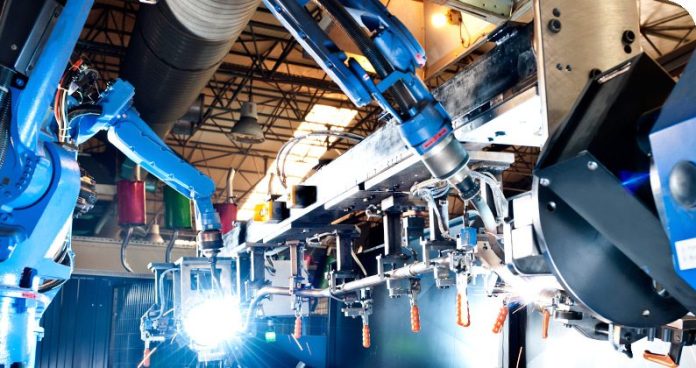OEE and the big losses in manufacturing
Overall Equipment Effectiveness (OEE) is a key concept in the smart manufacturing field. It’s a function of measuring availability (productive time), performance (cycle time), and quality (waste/scrap). By multiplying the percentage of availability, performance and quality, you can derive an OEE score, with 100% being the Holy Grail of sorts. The higher the OEE number, the lower the associated costs.
The concept was pioneered by Seiichi Nakajima and serves as the core of key manufacturing methodologies, including Total Productive Maintenance, Lean manufacturing, Six Sigma and World Class Manufacturing. OEE was further developed by the Japan Institute for Plant Maintenance, a nonprofit established in 1969, with the stated goal of “promoting safe, secure and reliable production and maintenance activities, as well as stabilizing and improving quality, in the world of industry through supporting problem-solving related to the enhancement of productivity, equipment-management technologies, and maintenance technologies and skills.”
Drilling down further, we categorize the six big losses beneath the three OEE metrics. Availability covers equipment failures and breakdowns, as well as time spent on setup and adjustment. Performance encapsulates idle time and reduced operational speed. And quality encompasses process defects and reduced yield.
According to Vorne Industries, the “Six Big Losses” are a very effective way to categorize equipment-based losses: Unplanned Stops, Planned Stops, Small Stops, Slow Cycles, Production Defects, and Startup Defects. Vorne noted that the Six Big Losses categorize productivity loss from an equipment perspective. They align directly with OEE and provide an additional and actionable level of detail about OEE losses.
Unplanned stops are significant periods of time in which equipment is scheduled for production but is not running due to an unplanned event. Examples include equipment breakdowns, tool failures, unplanned maintenance, lack of operators or materials, being starved by upstream equipment or being blocked by downstream equipment.
Meanwhile, planned stops are periods of time in which the equipment is scheduled for production but is not running due to a planned event. Examples include changeovers, tooling adjustments, cleaning, planned maintenance, and quality inspections.
Production defects are defective parts produced during stable production. This includes parts that can be reworked, since OEE measures quality from a First Pass Yield perspective. Examples include incorrect equipment settings, operator or equipment handling errors, or lot expiration (e.g., pharmaceutical).
How can 5G help to improve Overall Equipment Effectiveness?
According to Andy Rowland, head of digital manufacturing at BT, 5G technology can be used to reliably and securely connect new sensors to measure things like vibration, pressure and temperature to help predict equipment failures to improve the OEE score.
Also, a previous report by Tech Mahindra stated that the global manufacturing sector is at the cusp of a major digital revolution fueled by adoption of Industry 4.0 technologies, including 5G, that can improve OEE by enhancing process availability, reducing defects, and increasing productivity. “These ‘connected’ digital technologies are drivers that will enable enterprises to reduce time-to-actions through better analytics and enhanced visibility of shop floor performances.”
5G and Edge Computing enables seamless adoption of Industry 4.0 technologies that improve machine and process efficiency, system availability, reduce defects, and enhance productivity, Tech Mahindra said.
For more 5G manufacturing content, check out the following:
- What is 5G manufacturing and what does it mean for productivity?
- Top 5 5G manufacturing use cases
- Three 5G manufacturing case studies: Audi, Haier, Bosch
- What’s the role of a digital twin in smart manufacturing?
- 5G manufacturing use case spotlight: Automated guided vehicles
- 5G manufacturing use case spotlight: Real-time video analytic
- How to improve Overall Equipment Effectiveness with 5G
- 5G manufacturing use case spotlight: Additive manufacturing
- What is lean manufacturing and how can 5G help?
- Top 5 5G manufacturing use cases
- What’s the role of AI in 5G manufacturing?
- What is a digital thread and what does it mean for manufacturers?
- What’s the role of edge computing in 5G manufacturing?
- 5G manufacturing use case spotlight: Industrial automation
- 5G manufacturing use case spotlight: Troubleshooting using a digital twin
- How can 5G enable industrial IoT manufacturing implementations?
- 5G manufacturing use case spotlight: AR remote assistance
- Do industrial IoT manufacturing implementations need 5G?
- 5G manufacturing use case spotlight: Supply chain optimization
- 5G manufacturing use case spotlight: Collaborative robotics
- What is discrete manufacturing and does 5G have a role to play?
- What is Time Sensitive Networking and how does it impact 5G manufacturing?
- 5G manufacturing use case spotlight: Automated quality assurance

